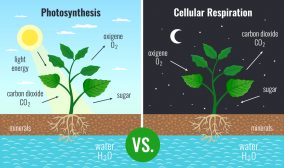Definition
(genetics) Gene knock-in, as in genetic engineering method
(chemistry) A symbol for the dissociation constant of an inhibitor
(chemistry) The measure of bond-tightness between an enzyme and a corresponding enzyme inhibitor
(chemistry) The measure of ligand binding affinity
(chemistry) Potassium iodide
Supplement
In genetics and molecular biology, Ki stands for gene knock-in, or simply knock-in. A knock-in pertains to the genetic engineering method involving the insertion of a protein coding cDNA sequence at a particular locus in the chromosome of an organism, typically a laboratory mouse model.1
In chemistry, Ki is a symbol for the dissociation constant. By definition, the dissociation constant is a mathematical constant that describes the tendency of a large molecule to dissociate reversibly into smaller components. It is the equilibrium constant in a dissociation reaction. It is a type of equilibrium constant that specifically involves the measure of the propensity of dissociation of a complex molecule into its subcomponents. An example of its application is to describe how tightly a ligand binds to a particular protein. It is also referred to as the equilibrium dissociation constant or the ionization constant.
Reference(s):
1 Gibson, Greg (2009). A Primer Of Genome Science 3rd ed. Sunderland, Massachusetts: Sinauer. pp. 301–302. ISBN 978-0-87893-236-8.
Dictionary > Ki
You will also like...

Mātauranga Māori and Science
Mātauranga Māori is the living knowledge system of the indigenous people of New Zealand, including the relationships t..

Stems
Stems primarily provide plants structural support. This tutorial includes lectures on the external form of a woody twig ..

New Zealand’s Biodiversity
Find out more about New Zealand's unique biodiversity by exploring a range of different ecosystems and the key role of s..

Plant Metabolism
Plants are responsible for incredible feats of molecular transformation. Plant processes, such as photosynthesis, photop..

Growth and Plant Hormones
Plants, like animals, produce hormones to regulate plant activities, including growth. They need these hormones to respo..

The Evolutionary Development of Multicellular Organisms
Multicellular organisms evolved. The first ones were likely in the form of sponges. Multicellularity led to the evolutio..

